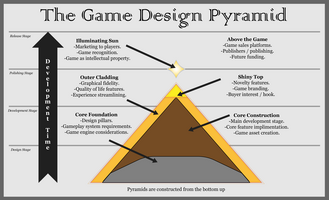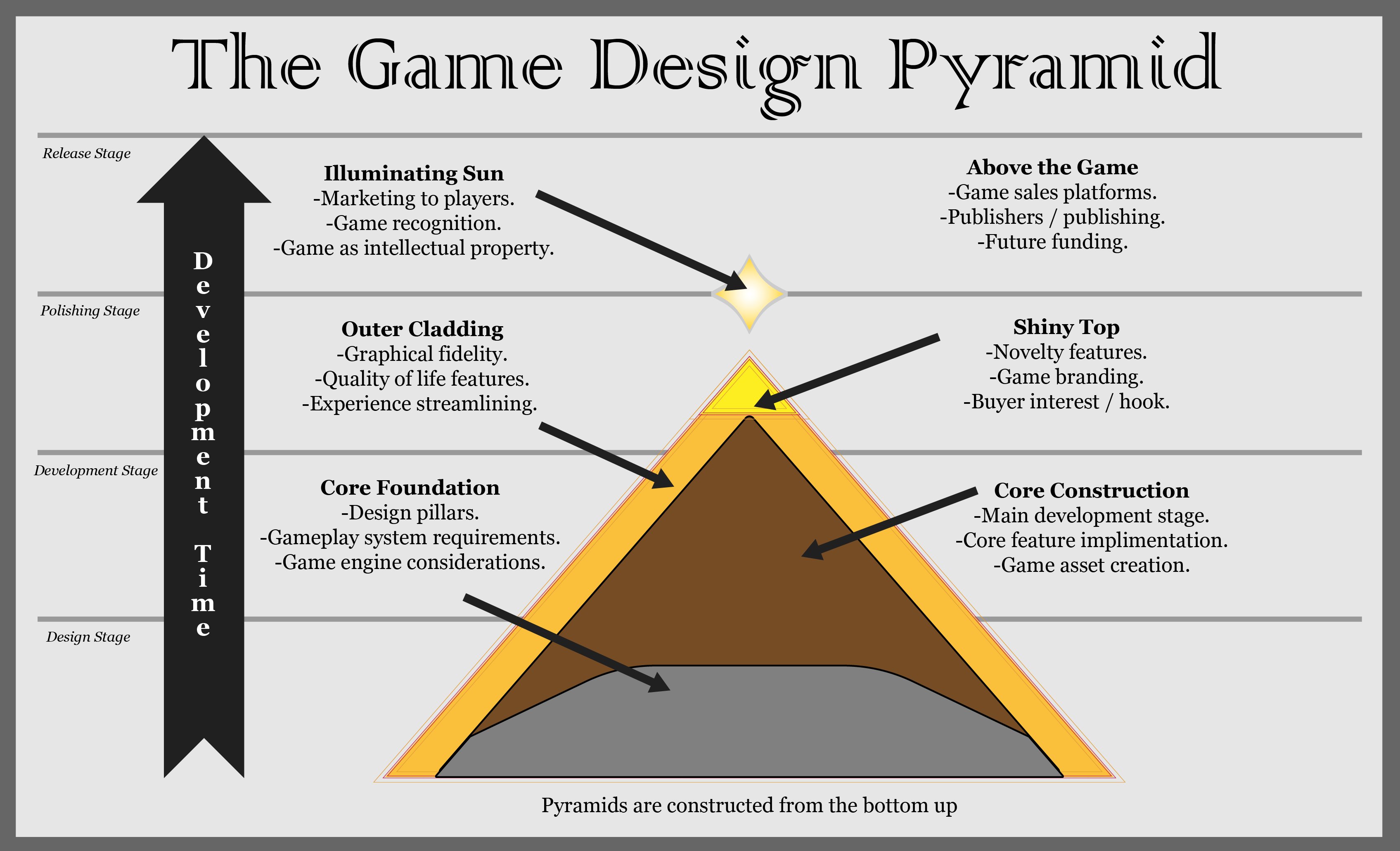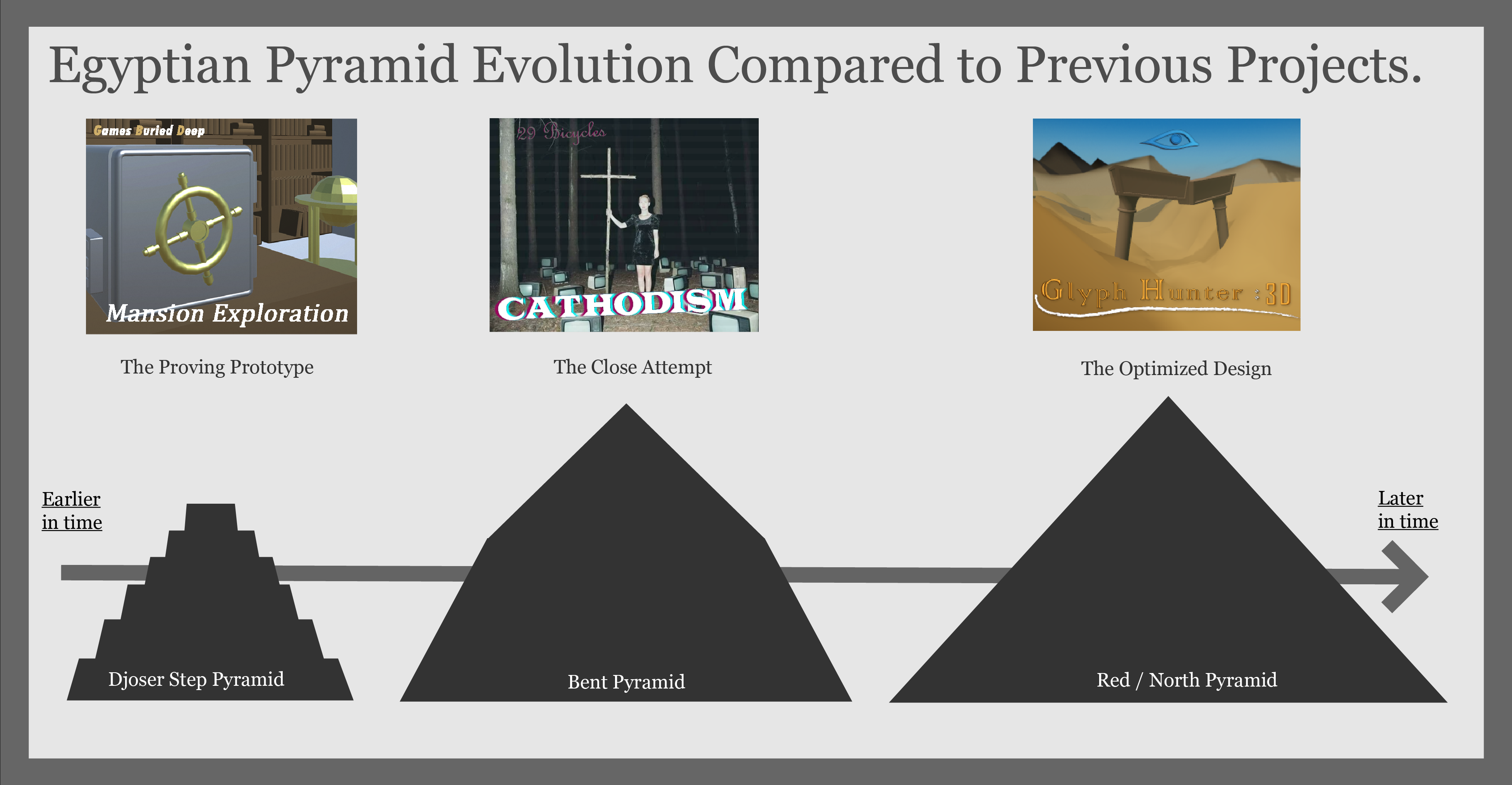Building Videogames like Pyramids


This is the final dev-log in my journey to developing Glyph Hunter : 3D where have discussed the design decisions and requirements that influenced my latest Unity game.
To summarize the previous posts on the GBD project and Cathodism, Glyph Hunter : 3D represents a long time spent learning what makes a point and click system useful to the player. The system design started with cinematic keyboard / mouse controls, and crossed over with a first person character controller built for 3D physics. The result is what is seen in the game. Players control the full 360 degree rotation of their camera, while only using the mouse to click on locations to travel to or interact with puzzles. The experience this functionality creates allows the player to focus on the 3D environment and feel immersed by the game's activities rather than having to worry about navigation.
In short, the design intention with Glyph Hunter : 3D was to take the parts that worked well from previous 3D games and put them together in a streamlined player oriented experience.
The strategy I employed in creating my intended experience as a solo developer was to work along planned steps of development. Starting from reworking the core point and click system, then to the puzzle implementation. once the core was complete I moved on to user experience considerations, and visual polish. I went through these stages in order of how much of each time I would need to spend working on them and a rather fitting trend emerged. I began see the construction process of my project being very similar the construction of a pyramid by design.

Despite what some UFO researchers say, the famous pyramids in Egypt were verifiably constructed using techniques learned over thousands of years of advances in human engineered megastructures. Because of this, the pyramid analogy can be extended to how I relate Glyph Hunter : 3D to the other unity 3D projects I worked on. Both Cathodism and the GBD project bear marks of the numerous development constraints around them. Both these projects are good examples of what teams could do with limited resources, but neither were entirely manifested as the experience they could have been. Because this is quite common of class related projects, working alone gave me the opportunity to take the time to address many of the know issues from the prior games.

The design ethos of each project can bare similarities in the learning experiences of ancient pyramid builders. Glyph Hunter : 3D is by no means a comparison to the grand Khufu pyramid, but represents an example of a Unity 3D game with all the considerations made to create the most desirable outcome. Overall the analogy works to represent learning unity 3D as a process that took multiple attempts in order to work out all the issues and requirements.
The future for Glyph Hunter looks towards creating bigger versions of the desired structure. future releases will follow a similar shape of development and get more ambitious in nature. that being said of course there comes a point where one builder only build so much, so the future of Glyph Hunter as a series game has yet to be decided.
Get Glyph Hunter 3D
Glyph Hunter 3D
3D Egyptian Exploration
| Status | Released |
| Author | Eric C |
| Genre | Puzzle |
| Tags | 3D, Alternate History, Exploration, First-Person, Point & Click |
| Languages | English |
| Accessibility | One button |
More posts
- The Future of Glyph HunterJun 28, 2023
- Temple of Revelation Release v1.6Dec 20, 2022
- Menu update v1.5Dec 14, 2022
- Temple of Revelation Playtest v1.4Nov 16, 2022
- Temple of Revelation Playtest 1.2Oct 17, 2022
Leave a comment
Log in with itch.io to leave a comment.